Tech
Compact Wheel Loaders: Weaknesses Addressed, Strengths Made Stronger
Published
3 years agoon
By
admin
Equipment manufacturers have been busy improving what works well on compact wheel loaders while also attending to some of the more problematic features.
Visibility has been improved with more glass, better operator positioning and sloping hoods. Bucket breakout force and dump height have also increased.
Top speeds now are in the 20 to 25 mph range. Volvo even gives its L45H and L50H an optional high-speed drive that ups the top speed to 31.2 mph.
 The 66-gross-horsepower Hitachi ZW80 has a bucket capacity of 1.2 cubic yards and an operating weight of 12,600 pounds. The two-speed hydrostatic transmission provides travel speeds of up to 21.1 mph both forward and reverse. Hydraulic flow is 20.1 gpm. Dump cycle time is 9.5 seconds.HitachiToday’s compact wheel loaders “have higher hydraulic flows, greater attachment versatility, modernized operating stations with better comfort and ergonomics, and enhanced technology such as ride control and rearview cameras,” says Mike Winfield, product and applications manager, Hitachi Loaders America.
The 66-gross-horsepower Hitachi ZW80 has a bucket capacity of 1.2 cubic yards and an operating weight of 12,600 pounds. The two-speed hydrostatic transmission provides travel speeds of up to 21.1 mph both forward and reverse. Hydraulic flow is 20.1 gpm. Dump cycle time is 9.5 seconds.HitachiToday’s compact wheel loaders “have higher hydraulic flows, greater attachment versatility, modernized operating stations with better comfort and ergonomics, and enhanced technology such as ride control and rearview cameras,” says Mike Winfield, product and applications manager, Hitachi Loaders America.
Customers can still choose between Z-bar and parallel-lift, also known as toolcarrier, linkages. Both had strengths, but also some weaknesses. The weaknesses have been addressed in the newer designs. Current versions of parallel linkages have increased performance specs, and Z-bar linkages now enable better visibility.
 The 64-horsepower Kubota R640 has a standard bucket capacity of 0.94 cubic yards and breakout force of 9,869 pounds. Auxiliary flow is 17.8 gpm at 2,973 psi. Travel speed is up to 12.4 mph, and both axles have differential locks. Articulation is 40 degrees both directions.KubotaThe Kubota R540 and R640 have Z-bar linkages for greater breakout and lift but also have delta-shaped loader arms for an improved view of the coupler and attachment. A full-size right-side window gives excellent visibility to the right front tire. Switches have been moved from the steering column to the right side of the cab to the relocated console.
The 64-horsepower Kubota R640 has a standard bucket capacity of 0.94 cubic yards and breakout force of 9,869 pounds. Auxiliary flow is 17.8 gpm at 2,973 psi. Travel speed is up to 12.4 mph, and both axles have differential locks. Articulation is 40 degrees both directions.KubotaThe Kubota R540 and R640 have Z-bar linkages for greater breakout and lift but also have delta-shaped loader arms for an improved view of the coupler and attachment. A full-size right-side window gives excellent visibility to the right front tire. Switches have been moved from the steering column to the right side of the cab to the relocated console.
“Everything is neatly located on the right side at the operator’s fingertips while also creating a more spacious cab,” says Patrick Baker, Kubota Construction Equipment product manager.
Adding versatility
Winfield says compact wheel loaders’ greater lift capacity, greater attachment versatility, higher lifting ability and better machine stability make them good candidates for many applications once thought suited only for skid steers and compact track loaders.
“Auxiliary hydraulics are standard on all Yanmar models of compact wheel loaders,” says Frank Gangi, product manager. “Hydraulic quick couplers make it quick and easy to swap out attachments, and inching pedals provide driving and stopping sensitivity when operating at high rpm.”
Yanmar has three models under 90 horsepower with hydraulic specs ranging from 14.8 gallons per minute at 3,000 psi for the V4-7 to 30 gpm at 2,610 psi for the V10 with High Flow.
 The 61-horsepower Yanmar V8 has bucket capacities of 1.05 to 1.57 cubic yards and a straight tipping load of 8,311 pounds. The Deutz TCD 2.9 L4 engine is rated at 60 net horsepower. Hydraulic flow is up to 17 gpm at 3,625 psi. The parallel lift linkage delivers 10,318 pounds of breakout force at the bucket edge.YanmarLee Padgett, product manager, Takeuchi, says auxiliary hydraulics and advanced machine controls allow the use of tree spades, power rakes, mulchers, mowers, trenchers and breakers.
The 61-horsepower Yanmar V8 has bucket capacities of 1.05 to 1.57 cubic yards and a straight tipping load of 8,311 pounds. The Deutz TCD 2.9 L4 engine is rated at 60 net horsepower. Hydraulic flow is up to 17 gpm at 3,625 psi. The parallel lift linkage delivers 10,318 pounds of breakout force at the bucket edge.YanmarLee Padgett, product manager, Takeuchi, says auxiliary hydraulics and advanced machine controls allow the use of tree spades, power rakes, mulchers, mowers, trenchers and breakers.
“Customers can outfit compact wheel loaders with many of the same attachments formerly reserved for skid steers and compact track loaders,” says Padgett. “Compact wheel loaders still appeal to most people for the same reason they always have, the ability to carry heavier loads at higher speeds. It’s just that now they can accomplish more tasks and are often versatile enough to do the work of multiple machines while still excelling at their core functionality.”
 The Takeuchi TW60 Series 2 compact wheel loader has a 61-horsepower Yanmar engine and travel speeds of 12.4 mph (standard) or 17.4 mph (high-speed option). Auxiliary flow is 15.2 gpm at 3,408 psi. Operating weight with cab is 10,692 pounds. Pin height is 10 feet 9.7 inches.TakeuchiJohn Bostwick and Stewart Gordon, territory sales managers for Tobroco-Giant, say the inherent features of compact wheel loaders make them ideal for handling attachments. Compared to other compact equipment of equivalent horsepower, compact wheel loaders typically have higher ground speeds and higher tipping loads.
The Takeuchi TW60 Series 2 compact wheel loader has a 61-horsepower Yanmar engine and travel speeds of 12.4 mph (standard) or 17.4 mph (high-speed option). Auxiliary flow is 15.2 gpm at 3,408 psi. Operating weight with cab is 10,692 pounds. Pin height is 10 feet 9.7 inches.TakeuchiJohn Bostwick and Stewart Gordon, territory sales managers for Tobroco-Giant, say the inherent features of compact wheel loaders make them ideal for handling attachments. Compared to other compact equipment of equivalent horsepower, compact wheel loaders typically have higher ground speeds and higher tipping loads.
“Our models that fit through a 36-inch gate provide double the tipping load of a compact track loader or skid steer of that width,” says Gordon. “They also have better visibility and lower ground disruption.”
 With the Giant G2200E, three battery options of 260-, 390- and 520-amp-hours give run times of 4, 6 and 8 hours, respectively, in normal working conditions. On-board charging options of 40 or 60 amps connect to a standard 230-volt power supply. External chargers of 40 to 300 amps can boost battery levels by 50% in under 30 minutes.Tobroco-GiantGiant’s compact wheel loaders have various linkages, each intended to optimize performance for a particular model. “No one linkage works best for all applications, so we match the linkage to each model’s intended use,” says Bostwick. He also says weak hydraulic performance is a thing of the past for many models. “You can have 30 gpm on a 75-horsepower wheel loader now.”
With the Giant G2200E, three battery options of 260-, 390- and 520-amp-hours give run times of 4, 6 and 8 hours, respectively, in normal working conditions. On-board charging options of 40 or 60 amps connect to a standard 230-volt power supply. External chargers of 40 to 300 amps can boost battery levels by 50% in under 30 minutes.Tobroco-GiantGiant’s compact wheel loaders have various linkages, each intended to optimize performance for a particular model. “No one linkage works best for all applications, so we match the linkage to each model’s intended use,” says Bostwick. He also says weak hydraulic performance is a thing of the past for many models. “You can have 30 gpm on a 75-horsepower wheel loader now.”
Bostwick says maintenance costs are usually much lower for compact wheel loaders than for compact track loaders and skid steers, “which are fighting against themselves on every turn.”
 As with all Case F Series loaders, the 321F has adjustable electrohydraulic controls. Operators can adjust the responsiveness of lift and bucket tilt functions. The 321F has an FPT 3.4-liter 4-cylinder engine rated at 74 horsepower. Operating weight is 13,303 pounds with cab. Standard flow is 22.5 gpm; a high-flow option provides 34.3 gpm. Main relief pressure is 3,336 psi.Case CERyan Anderson, product marketing manager, New Holland, says there are still clear lines dividing equipment types and applications. “Skid-steer and compact track loaders are still best for high-demand hydraulic attachments,” he says. “Lift-and-carry operations are best left to compact wheel loaders. If the yard is big enough to accommodate one, a compact wheel loader is a better choice for loader applications.”
As with all Case F Series loaders, the 321F has adjustable electrohydraulic controls. Operators can adjust the responsiveness of lift and bucket tilt functions. The 321F has an FPT 3.4-liter 4-cylinder engine rated at 74 horsepower. Operating weight is 13,303 pounds with cab. Standard flow is 22.5 gpm; a high-flow option provides 34.3 gpm. Main relief pressure is 3,336 psi.Case CERyan Anderson, product marketing manager, New Holland, says there are still clear lines dividing equipment types and applications. “Skid-steer and compact track loaders are still best for high-demand hydraulic attachments,” he says. “Lift-and-carry operations are best left to compact wheel loaders. If the yard is big enough to accommodate one, a compact wheel loader is a better choice for loader applications.”
New Holland has three models. The W50C ZB has 58 horsepower with Z-bar linkage; the W50C TC is the same model with parallel linkage lift arms. The W80C HS is a 74-horsepower Z-bar machine with a high-speed option that reaches 21 mph.
 The 74-gross-horsepower New Holland W80C has an operating weight of 13,184 pounds and a heaped bucket capacity of 1.4 cubic yards. The high-speed option provides travel speeds up to 21 mph. Loader circuit flow is 22 gpm at 3,335 psi. Dump height is 105 inches, and reach is 33 inches.New HollandScott Britton, Cat product application specialist, says skid steers and CTLs will often have the option to upgrade both hydraulic flow and pressure; whereas, with the compact wheel loader, the option is for greater flow only, if it exists. “And skid steers and compact track loaders offer better attachment control just by virtue of their design.”
The 74-gross-horsepower New Holland W80C has an operating weight of 13,184 pounds and a heaped bucket capacity of 1.4 cubic yards. The high-speed option provides travel speeds up to 21 mph. Loader circuit flow is 22 gpm at 3,335 psi. Dump height is 105 inches, and reach is 33 inches.New HollandScott Britton, Cat product application specialist, says skid steers and CTLs will often have the option to upgrade both hydraulic flow and pressure; whereas, with the compact wheel loader, the option is for greater flow only, if it exists. “And skid steers and compact track loaders offer better attachment control just by virtue of their design.”
Some features are beneficial regardless of application. John Deere’s 304L and 204L are at or just under 8 feet in overall height to improve access in tight spaces. They have fewer features than the other two models in the Deere lineup, the 244L and 324L, but still accept a wide range of the more than 100 attachments the company offers. The 244L and 324L have a 23 mph top speed and optional high-flow hydraulics up to 29 gpm (244L) and 35 gpm (324L). A high-lift option on the 324L adds 17 inches to the height to hinge pin.
 Powered by a Cat C303B DIT engine rated at 74 net horsepower, the Cat 906M has a 12,346-pound operating weight and 8,666-pound straight tipping load. Steering articulation is 39 degrees left and right. Bucket capacity is 1.2 cubic yards. Available options include 100% differential lock on both axles, selectable on the move and ride control.CaterpillarDeere’s Articulation Plus feature is available on the 244L and 324L. “Articulation Plus automatically adds 10 degrees of rear-wheel steer to the 30 degrees of articulation as the steering approaches full lock while retaining full tipping load capacity,” says Luke Gribble, Deere solutions marketing manager.
Powered by a Cat C303B DIT engine rated at 74 net horsepower, the Cat 906M has a 12,346-pound operating weight and 8,666-pound straight tipping load. Steering articulation is 39 degrees left and right. Bucket capacity is 1.2 cubic yards. Available options include 100% differential lock on both axles, selectable on the move and ride control.CaterpillarDeere’s Articulation Plus feature is available on the 244L and 324L. “Articulation Plus automatically adds 10 degrees of rear-wheel steer to the 30 degrees of articulation as the steering approaches full lock while retaining full tipping load capacity,” says Luke Gribble, Deere solutions marketing manager.
Ethan Clowes, JCB product manager, backhoes, wheel loaders and side dumpers, points to features on the smallest model in its lineup, the 407. Like all JCB wheel loaders, the 407 meets Tier 4 Final with a diesel oxidation catalyst and no diesel particulate filter. Telematics are included. A common configuration includes a standard front axle and limited-slip rear differential. The 407 is rated for 7,700 pounds of towing capacity. A high-speed option increases travel speed to over 18 mph.
“Choosing the right machine, spec’d the right way, comes down to ROI,” says Clowes. “Understand your operation. Understand the abilities of each machine. Then match the machine to the job.”
 The Deere 244L is powered by a Yanmar engine rated at 71 net horsepower and features Deere’s unique Articulation Plus Steering System, which combines 30 degrees of articulation with 10 degrees of rear-wheel steering. Standard speed is 23 mph. Differentials are locking front and open rear. Operating weight is 12,258 pounds.John Deere
The Deere 244L is powered by a Yanmar engine rated at 71 net horsepower and features Deere’s unique Articulation Plus Steering System, which combines 30 degrees of articulation with 10 degrees of rear-wheel steering. Standard speed is 23 mph. Differentials are locking front and open rear. Operating weight is 12,258 pounds.John Deere
Breakout force
Compact wheel loaders are popular in Europe in the way skid steers are in the U.S. As demand for compact wheel loaders in North America grows, several European OEMs are looking to break into the market.
Harry Fleegel is operations manager for TNE Distributing in Minnesota. The company started bringing Cast loaders over from Italy in late 2016.
Why Cast?
“Body panels are steel, not plastic,” he says. “Compared to many other brands, they have bigger engines and better service access. Pin height is higher and tires are bigger with 13- and 14-inch sizes.”
He says Cast has been eager to work with TNE to develop machines for the U.S. market with such features as a universal mini-skid attachment plate, common hydraulic attachments and multi-function joysticks. TNE offers nine models of Cast compact wheel loaders. All have joysticks, but other features and engine power increase as you move up the line.
 The four-wheel-drive Cast 28T is powered by a Kubota D1105 engine rated at 25 horsepower. An electric differential lock and four-function joystick are standard, as is a telescopic boom and universal coupling plate. Operating weight is 2,760 pounds.Netherlands-based Tobroco-Giant was founded in 1996 by Toine Brock, who is still the company’s owner and director. The company’s Giant imports to the U.S. market began in 2016.
The four-wheel-drive Cast 28T is powered by a Kubota D1105 engine rated at 25 horsepower. An electric differential lock and four-function joystick are standard, as is a telescopic boom and universal coupling plate. Operating weight is 2,760 pounds.Netherlands-based Tobroco-Giant was founded in 1996 by Toine Brock, who is still the company’s owner and director. The company’s Giant imports to the U.S. market began in 2016.
Chris Sleurink is the CEO of miniloaders.com, the North America distributor of the Knikmops Km100 Tele from Belgium. The imported machine gets rebranded here as Intrepid. Sleurink and his father began importing them in 2018.
The Km100 Tele has an operating weight of 2,800 pounds and a single-speed drive capable of 11 mph. Hydraulics are 7.4 gpm at 2,600 psi. Sleurink says the Km100 Tele is well-suited to the North American market, but they will consider bringing in additional models from Knikmops’ 19-model line to meet market demands.
Mecalac has four categories of compact wheel loaders: articulated, 4WS, swing (the linkage assembly swivels 90 degrees left and right; these are also 4WS) and telescopic for a total of 12 models under 90 horsepower. Peter Bigwood, general manager, Mecalac North America, says having four categories addresses the unique needs of customers by emphasizing different aspects of performance. Bigwood says the 75-horsepower AS900 Tele offers the most balanced performance with bucket capacities to 1.6 cubic yards, three-mode 4WS, swing bucket and telescoping boom.
 This is a sneak peak photo of Manitou’s forthcoming MLA compact articulated wheel loaders. The company plans to roll out four models: MLA2, MLA 3, MLA 4 and MLA 5. They will be redesigned with a narrower width and able to perform material handling as well as earthmoving work.Manitou GroupFrench-based Manitou Group, which also owns Gehl and Mustang by Manitou brands, recently announced it was bringing a revamped and expanded line of articulated compact wheel loaders to North America. At a recent unveiling of its new products, the company offered a sneak peak of the MLA2, MLA 3, MLA 4 and MLA 5 compact loaders, which are being manufactured in Europe.
This is a sneak peak photo of Manitou’s forthcoming MLA compact articulated wheel loaders. The company plans to roll out four models: MLA2, MLA 3, MLA 4 and MLA 5. They will be redesigned with a narrower width and able to perform material handling as well as earthmoving work.Manitou GroupFrench-based Manitou Group, which also owns Gehl and Mustang by Manitou brands, recently announced it was bringing a revamped and expanded line of articulated compact wheel loaders to North America. At a recent unveiling of its new products, the company offered a sneak peak of the MLA2, MLA 3, MLA 4 and MLA 5 compact loaders, which are being manufactured in Europe.
The machines get a new design, with a narrower width for working on tight jobsites. They will be equipped with a short arm for greater capacity or a long arm for increased lifting height. The company says they will be able to perform material-handling as well as earthmoving tasks. They will be available in canopy or integrated cabin configurations and are expected to arrive at U.S. dealerships by the end of this year.
Electric emergence
“Customers today can choose between traditional diesel-powered models and new electric models,” says Darren Ashton, product manager for compact loaders, Volvo CE North America. “This wasn’t the case just a few years ago.”
Ashton says electric models offer comparable and even greater power and performance compared to diesel machines but with less noise and vibration and no local emissions. “This opens up opportunities where diesel-powered toolcarriers were never considered.”
Diesel continues to provide the lower upfront cost, but O&O costs “can be quickly offset thanks to significantly lower maintenance needs with electric models such as the Volvo L25,” he says.
 The Volvo L25 electric compact wheel loader has an operating weight of 11,023 pounds. Peak power for the driveline motor is 48 horsepower, and for the working hydraulics motor, 43 horsepower. Battery capacity is 39 kWh, good for up to 8 hours of operation. Charge times are around 12 hours with 230 volt and 2 hours with 400 volt.VolvoGiant offers the electric G2200E. It comes with a 260-ampere-hour, 48-volt lithium-ion battery; options include 390 Ah and 520 Ah batteries. There are two electric motors, a 6.5-kilowatt motor for the drivetrain and a 12 kW motor for the working hydraulics. Power is regenerated during braking and on trailing throttle, as when descending a hill.
The Volvo L25 electric compact wheel loader has an operating weight of 11,023 pounds. Peak power for the driveline motor is 48 horsepower, and for the working hydraulics motor, 43 horsepower. Battery capacity is 39 kWh, good for up to 8 hours of operation. Charge times are around 12 hours with 230 volt and 2 hours with 400 volt.VolvoGiant offers the electric G2200E. It comes with a 260-ampere-hour, 48-volt lithium-ion battery; options include 390 Ah and 520 Ah batteries. There are two electric motors, a 6.5-kilowatt motor for the drivetrain and a 12 kW motor for the working hydraulics. Power is regenerated during braking and on trailing throttle, as when descending a hill.
Two models are offered. The G2200E standard has a 111.2-inch lift pin height and 3,200-pound tipping load. The G2200E X-tra has a 96.5-inch pin height and 4,530-pound tipping load.
Sleurink says Knikmops is developing an electric model, which may be brought to the U.S. as an Intrepid.
 The Intrepid KM100 has a 25-horsepower Kubota engine and heavy-duty Poclain wheel motors. Top speed is 11 mph. Drive hydraulics are 22.2 gpm at 5,076 psi; work hydraulics are 7.4 gpm at 2,600 psi. Lift capacity is 1,485 pounds and tipping load is 1,705 pounds.Fleegel says Cast has an electric model in Italy, the 800 Eco, which he can bring to the U.S. for a customer who wants one, but he has no immediate plans for stocking the machine.
The Intrepid KM100 has a 25-horsepower Kubota engine and heavy-duty Poclain wheel motors. Top speed is 11 mph. Drive hydraulics are 22.2 gpm at 5,076 psi; work hydraulics are 7.4 gpm at 2,600 psi. Lift capacity is 1,485 pounds and tipping load is 1,705 pounds.Fleegel says Cast has an electric model in Italy, the 800 Eco, which he can bring to the U.S. for a customer who wants one, but he has no immediate plans for stocking the machine.
What about telescopic booms?
Many European compact wheel loader models also are available with telescopic booms to enhance their productivity as both loaders and toolcarriers.
All Cast models have telescopic booms. Giant offers three models in North America: the D254SW Tele, the G3500 Tele Series and the G5000 Tele Series. The Knikmops Intrepid, the KM100, is telescopic.
Mecalac’s three tele models are the AT900, AT1050 and AS900Tele. Bigwood points out that while tele models are extremely versatile, they are not ideal production machines.
“They’re not designed to spend all day charging the pile,” he says. “There are better machines for that.”
 The 75-horsepower Mecalac AS900 Tele offers bucket capacities to 1.6 cubic yards, three-mode 4WS, swing bucket and telescoping boom.Mecalac
The 75-horsepower Mecalac AS900 Tele offers bucket capacities to 1.6 cubic yards, three-mode 4WS, swing bucket and telescoping boom.Mecalac
You may like
-


Hyundai rolls out HS120V skid steer, HT100V CTL in U.S. (Video)
-
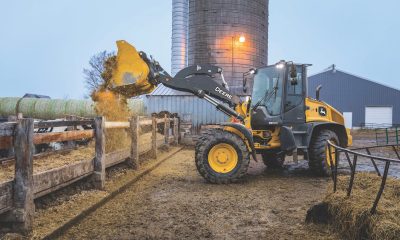

John Deere unveils three new compact wheel loader models
-


Mecalac intros compact loader line (Video)
-
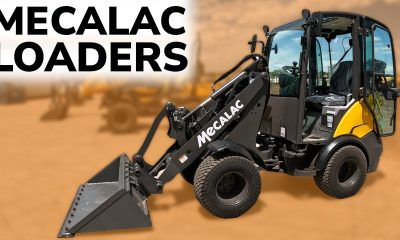

Video: Mecalac intros compact loader line
-


Case CE showcases updated compact wheel loader line
-


Case CE enters small articulated loader market at ConExpo 2023
Tech
Cat’s Next Generation 255 and 265 Get More Power, Lift Height
Published
7 months agoon
October 10, 2023By
admin
Caterpillar is bidding farewell to its 259D3, 279D3 and 289D3 compact track loaders with the introduction of its new, next-generation 255 and 266 models.
The completely redesigned models debuted at media and customer events at Caterpillar’s Edwards, Illinois, Demonstration and Learning Center last week. The 255 and 265 offer improved engine performance, more lift height, a roomier cab and more standard technology than their predecessors.
“We kept the DNA of the D3 series while reimagining the possibilities of loader performance using voice of customer feedback to lead the way,” says Trevor Chase, product application specialist for Caterpillar. “Both next-generation models leverage the many benefits offered by the vertical lift design. The new Cat 255 replaces the 259D3, while the 265 replaces both the 279D3 and 289D3 machines.”
The CTLs are the last of Cat’s building and construction products to get the next-generation treatment and simplified nomenclature. The first number (2) represents the skid steer loader and compact track loader machine family; the middle number (5 or 6) designates the machine size; and the ending number (5) is the compact track loader identifier. Skid steers will be identified by a 0 end number. Additional new models will roll out in the coming months, the company says.
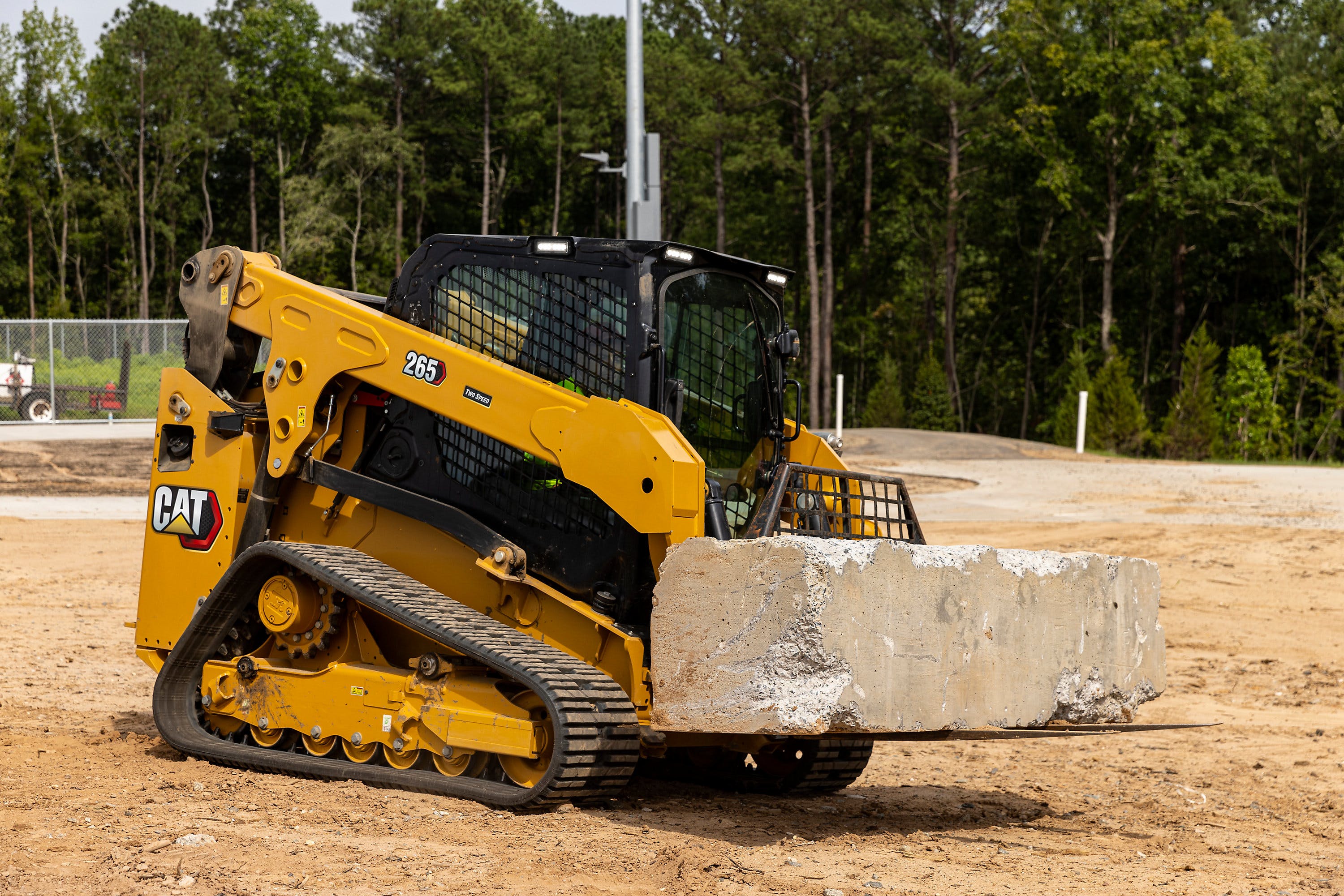 CaterpillarMore power and torque
CaterpillarMore power and torque
Cat equipped the 255 with a C2.8T engine and the 265 with a C2.8TA engine, both at 74 horsepower. This gives the new machines a significant boost in torque – 13% for the 255 and 43% for the 256 – over their D3-Series predecessors. The engine and cooling package are mounted lower in the frame for added visibility out the rear window and stability while lifting heavy loads.
Customers attest that the added lift height makes truck loading easier. The 255 offers 10 feet 4 inches of lift height, while the 265 can reach 11 feet high.
“The lift height has made a big difference when loading trucks,” said Derrick Roger, owner of Coast to Coast Lawnscapes, who spent several months testing the 255. “You can get on top of that truck now and empty the bucket; whereas, before you would have to shake the bucket to try to get the material to fall out.”
The 255 delivers 36% more tilt breakout, 26% higher lift breakout force and a 24% increase in rated operating capacity (ROC). The 265 also delivers 19% higher tilt breakout force and 22% higher lift breakout force.
Standard hydraulic pressure has been increased to 3,500 psi, allowing the 255 and 265 to operate all Cat Smart Attachments with the standard auxiliary hydraulics provided.
If demanding attachments require additional hydraulic flow, customers can have their Cat dealer activate the high flow functionality on the machine or remotely via software update. This makes it possible for the CTLs to hit 30 gallons per minute of flow at the standard system pressure.
A High Flow XPS factory option increases auxiliary hydraulic system pressure to 4,061 psi for both models, while also increasing the hydraulic flow to 30 gallons per minute for the 255 and 34 gallons per minute for the 265.
The torsion suspension undercarriage delivers better operator comfort, track wear and material retention, plus the stiffer design results in smoother graded surfaces, Cat says. A new 12.6-inch bar-tread narrow track option is available on the 255.
A more spacious cab
Cat says it has increased the cab width by 2.75 inches without making the machines wider and the footwell-to-ceiling height by 1.8 inches. The larger cab gives operators an additional 1.5 inches of hip room and 1.1 inches more width between the joysticks.
A range of new mechanical and air-ride suspension seat options are available, including a ventilated and heated seat. A new automatic temperature control allows operators to set a specific temperature. Relocated vents help cool or heat the machine quickly.
The standard package includes the same 5-inch LCD monitor as the D3 Series CTLs, which offers Bluetooth connectivity and functionality for the rearview camera feed, creep, job clock, and maintenance reminders.
Customers can upgrade to a new 8-inch advanced touchscreen monitor, like the display found in Cat’s next-generation mini excavators and small loaders. It delivers advanced radio control and supports the 270-degree multicamera option. The advanced monitor pairs with the advanced joysticks for integrated control of all machine functions and adjustments.
“You can adjust the movement – or the aggressiveness or the conservativeness – of how your tracks and lift arms work through your advanced touchscreen display,” Dante Thomas, skid steer and CTL marketing manager, said. “And you can control of all of your display functions from the advanced joysticks. There are buttons with enter and select functions on those joysticks that you’re able to change any functionality that is possible.”
Cat also redesigned the entry, making the 255 and 265 easier to enter and exit. The cab door can be opened even when the lift arms are not fully lowered to the frame stops. It can be removed without tools in less than one minute.
Advanced technologies
Calling the 255 and 265 “one of the most attachment-friendly machines on the market,” Thomas says both the standard and advanced monitors can run Cat Smart Attachments, such as the dozer and grader blades and backhoe.
“It has attachment recognition that when you plug the attachment into the machine, it recognizes which attachment is connected. It adjusts your joystick pattern, so it gives you intuitive and simple control,” says Thomas.
The available Cat Product Link Elite system tracks machine hours, location, asset utilization, provides fault code details and delivers advanced monitoring and machine health, that is remotely accessible via VisionLink. In addition, Product Link Elite provides remote flash and troubleshooting capabilities and quickly enables the remote activation of the SEA High Flow feature.
[embedded content]
Tech
Quick Data: 2023 Top-Selling Wheel Loaders and Auction Trends
Published
7 months agoon
October 9, 2023By
admin
Quick Data is a snapshot of new and used wheel loader sales trends from Randall Reilly’s EDA equipment financing data, TopBid auction price service and EquipmentWatch market trend reports.
Demand for wheel loaders has softened with new and used financed wheel loader sales down year-over-year from August 1, 2022 to July 31, 2023 according to Randall Reilly’s EDA equipment financing data.
Financed new wheel loader sales dropped 10%, while used financed wheel loader sales fell by 15% compared to the same period last year.
Cat (22.4%), Deere (21.0%) and Komatsu (12.4%) held their positions year-over-year as the top three sellers of new financed wheel loaders. Top models sold included the Deere 544 P-Tier (401), Deere 624 P-Tier (380) and the Komatsu WA270-8 (364).
[Watch: “A Really Solid Machine” – Test Run of Komatsu’s WA475-10 Wheel Loader]
Cat (28.5%) and Deere (22.9%) also snagged the No. 1 and 2 positions for the highest number of financed used units sold, with Case (14.7%) claiming the third spot. On the date we examined the data, the top-selling models were the Case 321F (340), Cat 926M (164) and the Case 621G (159).
During this period, there were more buyers of new loaders in Florida (955) than in any other state. Buyers of new wheel loaders were also prevalent in Texas (893) and Illinois (665). Those states were also top buyers of used financed machines, with 712 units sold in Texas, 413 in Florida, and 412 in Illinois.
EDA data is compiled from state UCC-1 filings on financed construction equipment. EDA continually updates this data as information comes in from each state.
[Related Content: A Rundown of the Latest Wheel Loaders for 2023]
Used Wheel Loader Market
Used wheel loader prices rose 10.1% for the 12-month period from August 1, 2022 to July 31, 2023, according to Randall Reilly’s EquipmentWatch market trend data.
The average price for a used wheel loader was $137,465 in July 2022 compared to $151,367 in July 2023. The average age of used wheel loaders fell slightly during the period, dropping from 8.8 years to 8.3 years.
 EquipmentWatchThe average age and price were calculated on 153,356 resale listings during the period in the EquipmentWatch database.
EquipmentWatchThe average age and price were calculated on 153,356 resale listings during the period in the EquipmentWatch database.
Over the last 12 months, prices for used wheel loaders have in general increased, with the largest gains in October 2022 (6.5%) and February 2023 (2.9%).
EquipmentWatch defines fair market value (FMV) as the monetary value of an asset that can be expected in a transaction with a single seller and single buyer, neither of whom is under any compulsion or time restriction to complete the transaction. FMV for heavy equipment is most closely associated with the private resale market, as opposed to the public auction market.
Wheel Loader Auction Prices
Caterpillar also dominated the auction charts, accounting for 18 of the top 20 wheel loaders sold in terms of price for the 12-month period of September 1, 2022 to August 31, 2023. Deere and Komatsu were the only other manufacturers to appear on the list.
The top auction price spot went to a 2021 Cat 966M with 2,188 hours. It sold for $400,000 at a Ritchie Bros. auction in Orlando, Fla., on September 21, 2022. The second-highest price paid was $315,000 for a 2019 Cat 980M with 7,836 hours at another Ritchie Bros. sale in Atlanta, on December 1, 2022. Rounding out the top three was a 2018 Deere 944K with 8,941 hours. It sold for $290,00 at a J.M. Wood Auction Co. sale in Montgomery, Ala., on March 21, 2023.
In total, there were 358 wheel loaders sold at auctions tracked by Top Bid during this time, with an average price of $99,747. (This does not include any units sold for less than $5,000.)
EDA, Top Bid and EquipmentWatch are owned by Randall Reilly, parent of Equipment World.
[Related Content: Heavy Equipment Auctions Set for Second Half of 2023]
Tech
Video: A closer look at Rokbak articulated dump trucks
Published
7 months agoon
October 6, 2023By
admin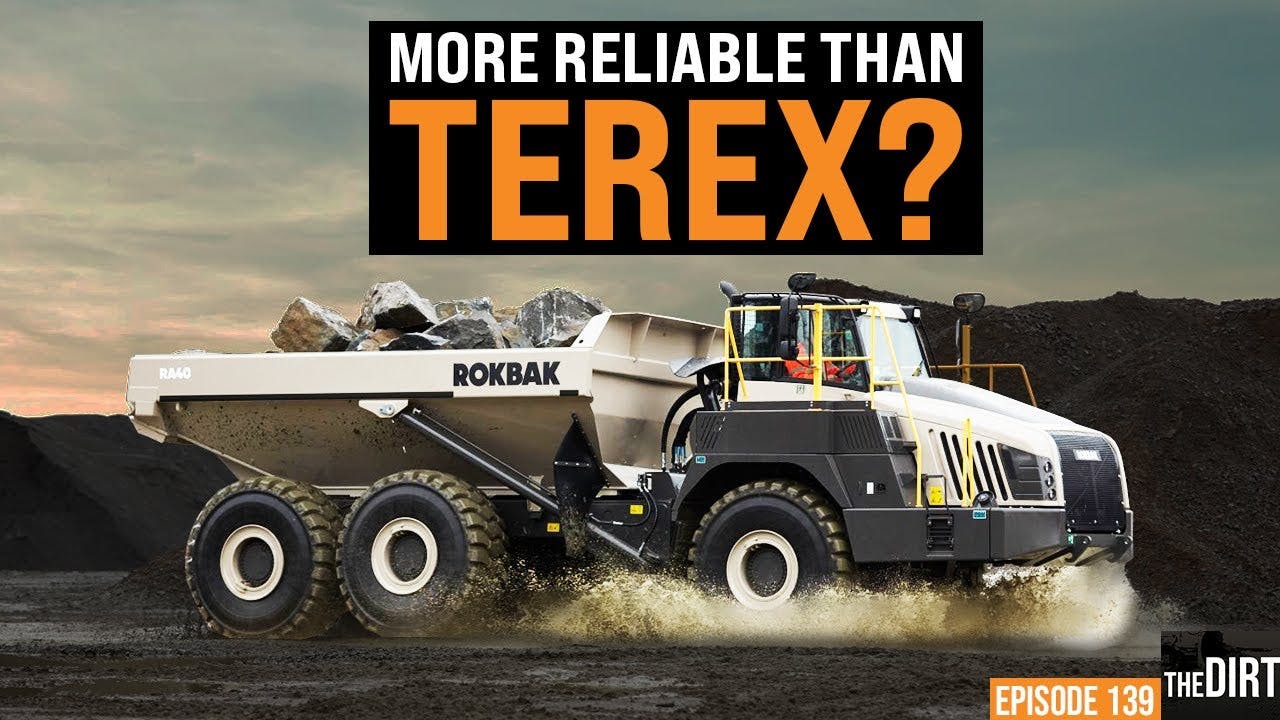

Volvo Construction Equipment bought Terex’s off-road truck line in 2014, and six years later, it rebranded its articulated haulers under the Rokbak name.
On this episode of The Dirt, we hear from Paul Douglas, Volvo vice president of rigid haulers, who explains the differences between the old Terex line and the Rokbak trucks. He also gives a hint at some of the new things coming from Rokbak, including redesigned cabs and replacing the current trucks with new models. There’s also the possibility of a new size truck to hit the market.
Rokbak, as with other construction equipment brands, is working toward a zero-emissions future. On this episode, he explains where the articulated dump truck market is heading in terms of alternative fuel. He adds that customers will see big changes in emissions and engines in the next five years, with the ultimate goal of reaching zero emissions within 10 years.
So to learn more about Rokbak and what the brand has in store for the future, check out this episode of The Dirt.
Equipment World serves up weekly videos on the latest in construction equipment, work trucks and pickup trucks – everything contractors need to get their work done. Subscribe and visit us at equipmentworld.com!
In This Episode:
Trending
-
Jobs2 years ago
Project Manager – Oxford
-
Jobs3 years ago
Commissioning Engineer Security Industry
-
Jobs2 years ago
Airport Retail Sales Assistants
-

 Business5 years ago
Business5 years agoHow To Renovate a Victorian House
-
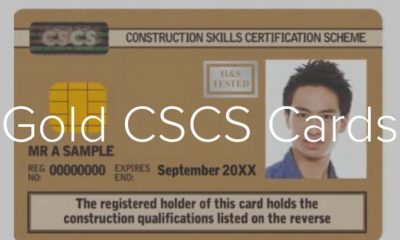
 Business3 years ago
Business3 years agoHow to Get a Gold Supervisory CSCS Card
-
Jobs2 years ago
PASMA labourer in Cirencester
-

 Tech3 years ago
Tech3 years agoIt Won’t Make You the $6 Million Man, But Hilti’s EXO-10 May Save Your Arms, Back
-
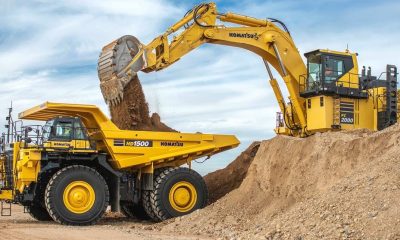
 Tech2 years ago
Tech2 years agoKomatsu launches new HD1500-8E0 rigid-frame dump truck


